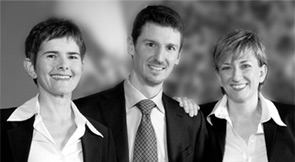Professional equipment hire
What do you need?
|
For a multi-lingual conference to succeed, you need not only a team of qualified interpreters but also professional simultaneous interpreting equipment. This should conform to the specific requirements for such equipment (DIN/ISO standards) and be hired from an experienced supplier. For a quotation to be drawn up, the following information is needed:
|  |
Please keep the following points in mind:
- The equipment supplier's technician should be responsible for all acoustic systems for the duration of the conference so as to avoid any conflict with the in-house technicians.
- You should ensure that the equipment supplier undertakes contractually to install only equipment that conforms to the relevant standards (ISO 2603, ISO 4043 and DIN IEC 914). These are intended to ensure the health and safety of the interpreters and have a considerable influence on their performance.
- Please make sure the interpreting booths are located in a position that offers the interpreters a clear view of the speakers, the screen and the audience.
- Make sure every participant who requires simultaneous interpretation is given a receiver and headphones, for example by setting up a distribution point at the entrance to the conference area.
- Allow time for a short test run of the equipment prior to the start of proceedings
ISO equipment standards
Interpreters have to work at high levels of concentration, and the booths need to be spacious and well ventilated, with adequate, non-dazzle lighting and a work surface big enough for laptops, documents and dictionaries. A direct view of the speakers and any visual aids such as slides etc. is also essential.
For this reason the International Association of Conference Interpreters (aiic) in close collaboration with the International Standards Organisation (ISO) and the International Electrotechnical Committee (IEC) has drawn up standard guidelines for interpreting booths.
You can find details of the requirements in the following standards:
- ISO standard 2603/1983 - describes conference centres and rooms specially designed for simultaneous interpreting with built-in booths and equipment.
- ISO standard 4043/1981 - defines conference rooms without built-in booths in which conferences can nevertheless be successfully held using mobile booths.
- Standard IEC 914/1988 - contains the electrotechnical specifications for interpreting equipment.
For video- and tele-conferencing the following requirements drawn up by national and international associations and organisations such as aiic (International Association of Conference Interpreters), the BDÜ (German Association of Translators and Interpreters), the European Court of Justice, the WCO (World Customs Organisation) and the JICS (EU Joint Interpreting and Conference Service) apply:
- Video-conference system with dedicated link (bandwidths: 125-12,500 Hz)
- Conformity with relevant ISO standards 2603 and 4043 and CEI standard 60914
- Duration of event to be interpreted limited to a maximum of 2 hours per day.
Linking up interpreters via Internet software is usually difficult, as ISDN or DSL/LAN links are based on the compression algorithms of the H320 standard and therefore can only carry a very limited bandwidth (7,500 Hz). Video-streaming would further limit the bandwidth, meaning that high-quality interpreting could no longer be guaranteed.




